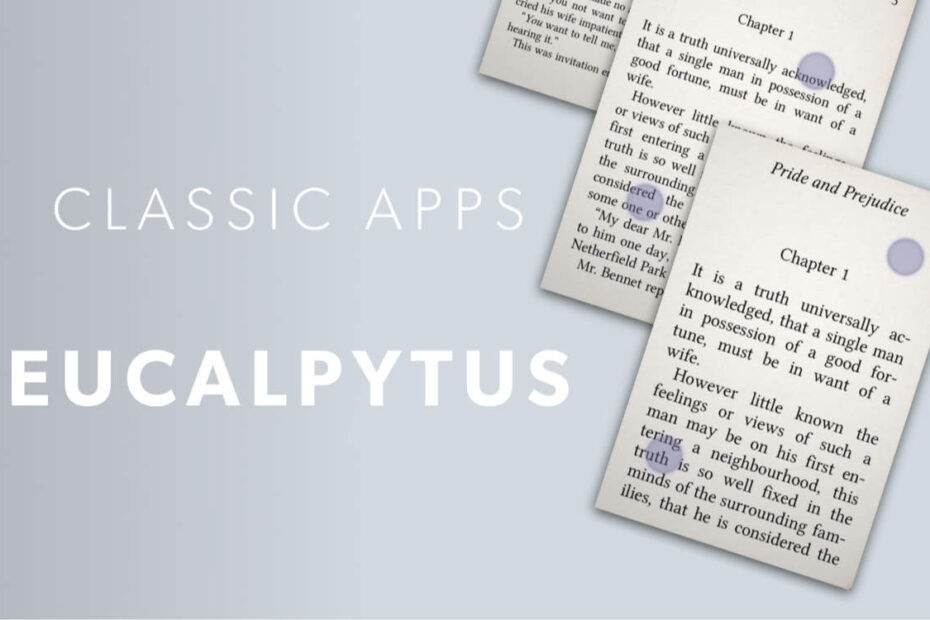This one’s a page-turner – the story of our favorite ever iPhone ebook reader
The latest entry in our classic iPhone apps series wanted to make digital books as tactile and usable as the real thing.
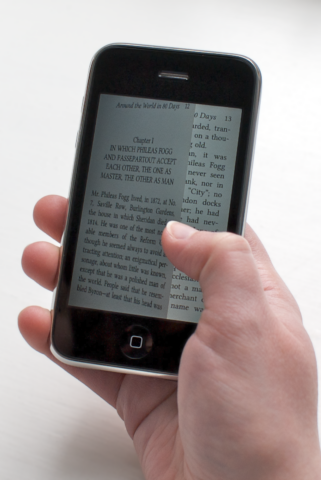
The closest thing on iPhone to a real book
What was Eucalyptus?
An ebook reader, from a time when innovation existed in that space. It centered on Project Gutenberg, a repository of older works where copyright has expired. (The project’s founder created the very first ebook, way back in 1971!)
Why was it a classic?
It went all-in on that early iPhone ideal of the device becoming the app – and one that retained elements from real-world objects. Typography was first-rate, and the page-turn animation was unlike anything seen before. While reading, you could almost forget you were interacting with a glass display.
Where is it now?
Long gone – and unlikely to return, as creator Jamie Montgomerie explains in the interview below. Still, Jamie remains active online – check out his blog and follow him on Mastodon if you’d like to see what he’s up to these days.
Q&A: a brief history of Eucalyptus
We speak to Eucalyptus creator Jamie Montgomerie about his app’s journey to the App Store – and beyond.
What was the genesis of Eucalyptus?
Jamie: I just wanted to build something by myself! I’d been working for Apple for seven years, my visa expired, and I had to move back to Edinburgh, Scotland. Initially, I worked remotely for Apple, using iChat – video calls before they were fashionable! But as time progressed, I realized it was the best time I’d ever have to scratch the ‘build something myself’ itch.
The iPhone had arrived, and the App Store was around the corner, so I quit my job, and started brainstorming. At the time, ebooks were only just entering the mainstream – the first Kindle came out after the iPhone – but people argued phones would never be used for reading, because the screens were too small.
I loved books and thought this was nonsense. People happily read small text in narrow columns in newspapers. I thought it should be possible to make text as readable on an iPhone’s screen – and that people might pay for an app that did that well.
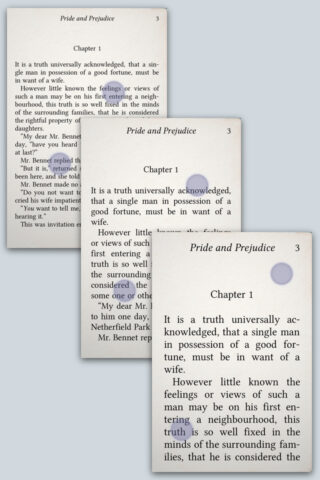
Pinching reflowed text – but typography always remained top-notch and book-like
Why did Eucalyptus not allow you to import your own files?
I wrote the text layout system specifically to work with plain-text Project Gutenberg books, rather than the then-emerging ePub books that apps like Stanza used. ePub was basically wrapped-up HTML, which would have taken quite some time to support.
Project Gutenberg books also had a loosely enforced standard, meaning centered text, italics, and chapter titles were reasonably easy to detect. I could parse text and lay books out really nicely – better than competitors laid out ePub, even. If I’d allowed users to import files that didn’t follow these informal standards, that would have led to frustration and tarnished my app’s reputation for good layout.
How important was it Eucalyptus followed a great Apple tradition in caring about typography?
All other apps at the time laid out text one word at a time, breaking lines whenever the next word would not fit on a line, much like a word processor. But in paper-based publishing, applications and human typesetters care about overall readability. Paragraphs are laid out so spacing between words and across lines looks consistent. There are lots of tricks to make reading feel good.
Eucalyptus was, to my knowledge, the first ebook app to lay out text with a comparable level of care. I tried very hard to present books that felt as comfortable to read as paper books. Many ebook apps still don’t do this!
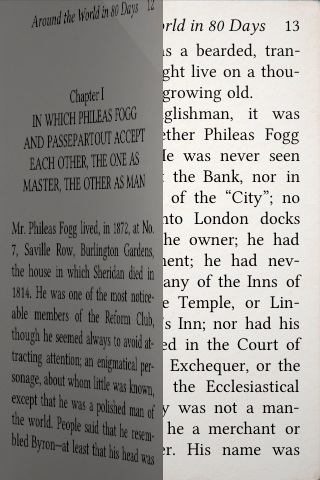
The famous page turn
In what other ways did Eucalyptus draw from real-world books?
I was really proud of the page turn effect. I still think it’s the best I’ve seen. I wanted the app to look and feel like a paper book, so it would be approachable, and even entice reading-on-phone skeptics.
It looks dated now, but some of the principles remain important – and are ignored by many reading apps today. I thought it was important you could continue to read the page as you turned, at a pace you controlled, like many people do when turning a page in a paper book. Many competing apps with a page-turn effect ‘folded’ the page, meaning text was obscured by the ‘back’ of the page as it turned.
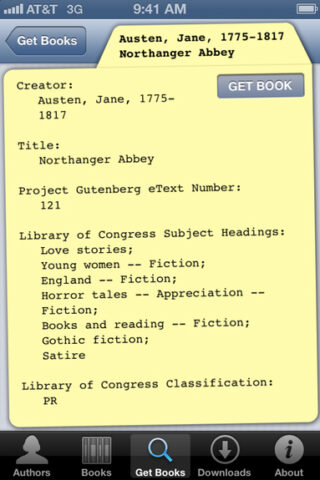
Index cards made search more friendly
Why did you include index cards in the app’s search?
I wanted something more approachable than an empty search interface with a table of results. The Project Gutenberg catalog database was incredibly dry, and lacked useful descriptions and genre mapping.
Through brainstorming with my wife Emily, and beta testers, I settled on ways to make discovery more friendly. Search autocomplete gave feedback that your term would lead to results. Book information was presented like library index cards, complete with a typewriter font. And we added staff and reader picks, which were the first thing you saw when you went to download books.
This was a big hit with users, and I’m still proud of the ‘half skeuomorphic’ look of the cards. My lack of artistic skill meant I had to keep things simple, which led to a combination of realism and standard iPhone UI that worked well.
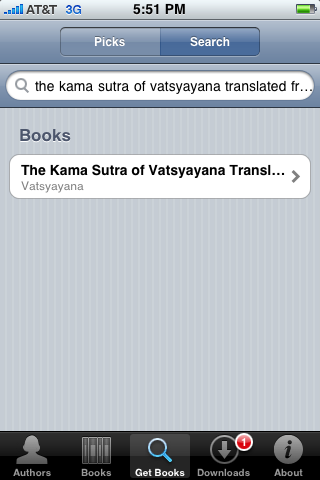
Eucalyptus was initially rejected by Apple
Prior to release, Eucalyptus had a brush with Apple censorship. What do you remember about that incident?
What a time. Apple initially rejected Eucalyptus because it could access a Victorian text-only translation of the Kama Sutra – if someone explicitly searched for it. The same document was readily available in Safari and some competing ebook apps! Apple would engage in no conversation about this until media coverage – much touching on ‘book banning’ – took off.
It was stressful. I’d worked on my app for over a year, and it was rejected for what felt like capricious reasons, with no chance of appeal.
I never attributed malice to Apple, but did think the company should have been more explicit and consistent regarding rules and their application, and better communicated with developers. And after higher-ups at Apple heard about the situation, I got the impression they thought the rejection was as ridiculous as I did, and wished it had never happened.
I have to admit once things settled for me, the publicity was a springboard for the app’s launch. Its success in subsequent years convinced me Eucalyptus stood on its own merits, but there are many great apps that went nowhere because they never got a critical mass of users that allows a word-of-mouth snowball to start.
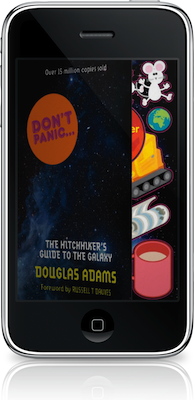
The Eucalyptus engine later drove commercial projects
The Eucalyptus engine was licensed for Hitchhiker’s Guide to the Galaxy books. How did that come about?
The Hitchhiker’s Guide ‘trilogy’ is a personal favorite. It was amazing to be asked to be a part of that. In many ways, the iPhone felt like the Hitchhiker’s Guide from the novels come to life. To everyone involved, it felt poetically circular to make it possible to read on iPhone.
The project came about when a development company approached me. It made the apps, and I provided the reading interface, but it all felt collaborative, and working on it was great fun. These books – and then a few more Pan Macmillan series – also pushed me to implement a rudimentary ePub layout engine, which kicked off a nice business for me for a few years. I grew ‘libEucalyptus’ into a pretty robust ePub 2 renderer, and licensed it for use in the iOS version of a Kindle/iBooks competitor called Blio.
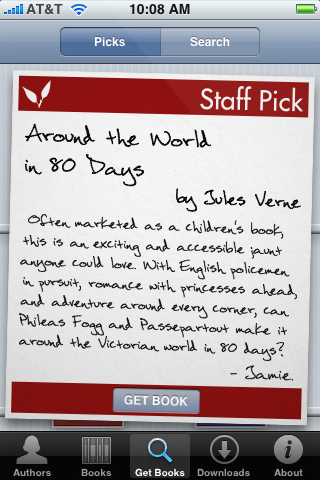
Staff picks aided discovery
Looking back, what do you feel about Eucalyptus – and might it one day return?
I do miss Eucalyptus – and wish it was there every time I read a book on my phone or iPad. And people do still occasionally ask about it. I really wanted to make a Eucalyptus 2. But after the ebook market exploded, I didn’t think the market would support a paid-for Project Gutenberg app.
However, I was excited for a while about ePub import – and contacted Adobe about licensing its DRM system. This would potentially have allowed people to read commercial and library ebooks in Eucalyptus 2. But I unfortunately discovered Adobe required apps using its DRM system to use its layout system too. The company wouldn’t budge. And not being able to use my layout system would have removed my app’s main advantage.
I do wonder what ebook reading apps would look like today if DRM was not a thing – or if Adobe was more flexible. The ereader industry feels stagnant. Where are the apps or devices implementing interesting, unorthodox new ideas? The answer is that, unless those ideas are thought up by someone working for Amazon, Apple, or maybe Kobo, they won’t get implemented.
Perhaps nowadays, with so many more iPhones and iPads around, there’s a market for a pay-for ereader app written with text layout, readability, and ease of use as its only priorities – even if it could only read non-DRM books. One not beholden to sales or marketing its own store. But I think it’s unlikely to be big enough to support even one developer.
